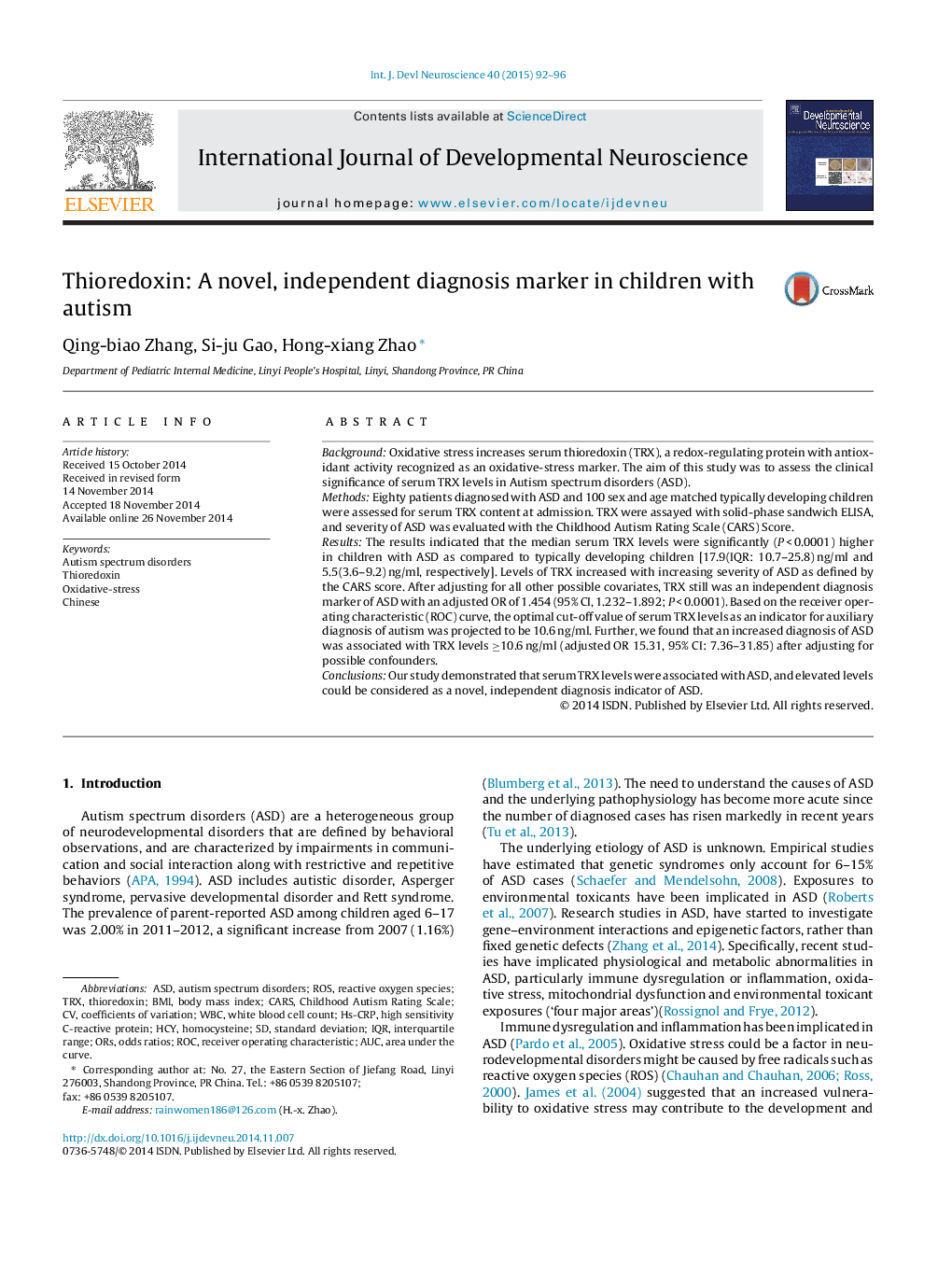| Article ID | Journal | Published Year | Pages | File Type |
|---|---|---|---|---|
| 2785866 | International Journal of Developmental Neuroscience | 2015 | 5 Pages |
•Thioredoxin (TRX), a redox-regulating protein with antioxidant activity recognized as an oxidative-stress marker.•The results indicated that the median serum TRX levels were significantly higher in ASD as compared to normal.•Serum TRX levels ≥10.6 ng/ml was associated with a 15.31-fold increase diagnosis of ASD.•Elevated serum TRX was a novel, independent diagnosis marker of ASD.•Serum TRX may play role in the pathophysiology of ASD
BackgroundOxidative stress increases serum thioredoxin (TRX), a redox-regulating protein with antioxidant activity recognized as an oxidative-stress marker. The aim of this study was to assess the clinical significance of serum TRX levels in Autism spectrum disorders (ASD).MethodsEighty patients diagnosed with ASD and 100 sex and age matched typically developing children were assessed for serum TRX content at admission. TRX were assayed with solid-phase sandwich ELISA, and severity of ASD was evaluated with the Childhood Autism Rating Scale (CARS) Score.ResultsThe results indicated that the median serum TRX levels were significantly (P < 0.0001) higher in children with ASD as compared to typically developing children [17.9(IQR: 10.7–25.8) ng/ml and 5.5(3.6–9.2) ng/ml, respectively]. Levels of TRX increased with increasing severity of ASD as defined by the CARS score. After adjusting for all other possible covariates, TRX still was an independent diagnosis marker of ASD with an adjusted OR of 1.454 (95% CI, 1.232–1.892; P < 0.0001). Based on the receiver operating characteristic (ROC) curve, the optimal cut-off value of serum TRX levels as an indicator for auxiliary diagnosis of autism was projected to be 10.6 ng/ml. Further, we found that an increased diagnosis of ASD was associated with TRX levels ≥10.6 ng/ml (adjusted OR 15.31, 95% CI: 7.36–31.85) after adjusting for possible confounders.ConclusionsOur study demonstrated that serum TRX levels were associated with ASD, and elevated levels could be considered as a novel, independent diagnosis indicator of ASD.
